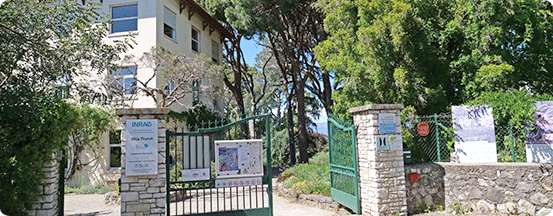The collections at the Villa Thuret
On Cap d'Antibes, the villa of a scholar with a passion for botanical experiments is home to an acclimatisation garden with a remarkable variety of species. In addition to his research into algae, Gustave Thuret founded one of the first botanical and acclimatisation gardens on the Côte d'Azur. He amassed a rich library, whose early titles on flora, fungi, trees...

A man
Gustave-Adolphe Thuret (1817 – 1875), born into a wealthy family, graduates in law. He discovers botany and develops a passion for algology under the guidance of Joseph Decaisne, botanist at the Muséum National d'Histoire Naturelle.
Gustave Thuret becomes a specialist in the reproduction of algae, which he studies with passion for thirty years. He conducts his studies using a microscope.
Gustave Thuret befriends Doctor Édouard Bornet (1828-1911), rather more interested in botany than medicine, and works with him for the rest of his life, first on algae and then on flowering plants. Their joint work, "Notes algologiques: recueil d'observations sur les algues" (“Algological notes: a collection of observations on algae”, in French), is published by Édouard Bornet after Gustave Thuret's death. The work features lithographs by Alfred Riocreux based on their observational drawings.
The two men subsequently move to the South of France to take advantage of the milder weather, better suited to Gustave Thuret's poor health brought on by severe rheumatism.
Bust of Gustave Thuret, Daderot, Public domain, via wikimedia commons
A botanical and acclimatisation garden
The move to Antibes in 1857 provides the opportunity to create a genuine, private research laboratory to continue the study of algae, particularly of the Mediterranean, to examine under favourable climatic conditions plants introduced from many countries and to analyse the indigenous Mediterranean flora.
The residence becomes an English-style garden, fashionable in the second half of the 19th century, replacing fields of wheat and vines, bordered by olive trees. Gustave Thuret and his friend Édouard Bornet launch a major horticultural project, unprecedented in the region.
The garden at the Villa Thuret is divided into two areas: on the one hand, the acclimatisation garden with its botanical collections, and on the other, the facility for the introduction and production of new species, with its seed house.

drawing of the garden in the visitors' booklet for the Villa Thuret by Poirault, 1931
A long period of work then ensues, fraught with difficulties. G. Thuret and E. Bornet have to learn everything from scratch about the introduction of species that often originate from the other side of the world. The young plants suffer from the heat in summer and the frost in winter. But once certain trees such as Aleppo pines, umbrella pines and holm oaks reach a sufficient size, they provide shelter for potted or seeded plants planted in their midst. From then on, success becomes more frequent.
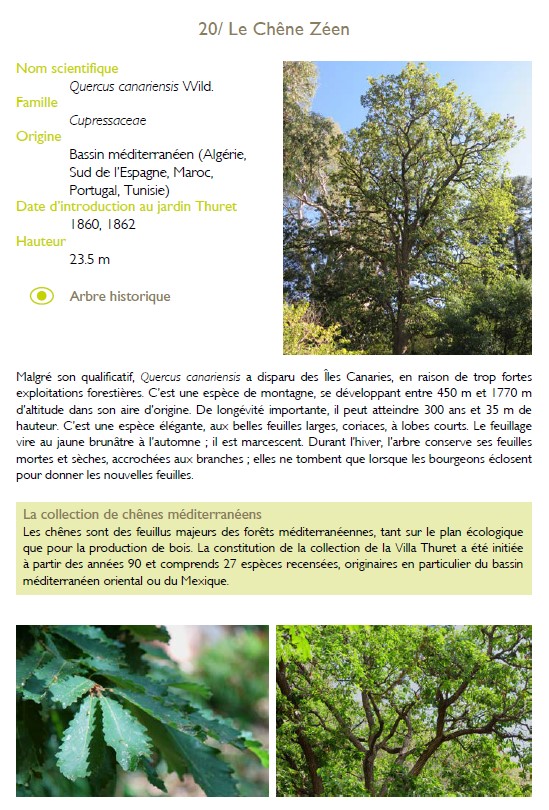
The trail of remarkable trees (“A la découverte du jardin de Thuret”, or “Discovering the Thuret garden”, in French), page 15: Algerian Oak.
The two men actively engage in seed exchange networks around the world with the French Natural History Museum and other institutions and botanical gardens. Three thousand species are thus introduced into the garden. Édouard Bornet pursues his hybridisation work until 1875.
The gardens becomes a highly popular destination for botanists from all over Europe, as well as for travellers, diplomats and artists.
You can persuade yourself that you have entered a poet's paradise...Not a suffering plant, not a mutilated tree, not a fortification, not an enclosure, not a hut, not a boat, no reminder of human effort, human misery or human defiance. The trees of every climate seem to have made a rendezvous of their own accord on this privileged mound, enclosing it in a cool crown and leaving visible to those who inhabit it only the upper regions, where the immeasurable and the inaccessible seem to reign.
Letters of a traveller on the subject of botany), from George Sand to Auguste Tourangin (lettres d’un voyageur à propos de botanique, de George Sand à Auguste Tourangin, Revue des deux mondes. 38° année, seconde période. Tome 76. Juillet 1868, p.482)
This activity would continue until after the death of Gustave Thuret and the acquisition of the garden and its villa by the French State under the auspices of the Ministry of Public Instruction, Religious Affairs and Fine Arts. Subsequently, Charles Naudin, another eminent scientist of his century (and a forerunner of contemporary biology with his work on the theory of evolution and heredity) takes over the management of the villa and its garden from 1878 to 1899. He successfully acclimatises and studies many types of eucalyptus trees, adding to the herbarium already started by Gustave Thuret and Édouard Bornet, and publishing the handbook “Manuel de l'acclimateur”.
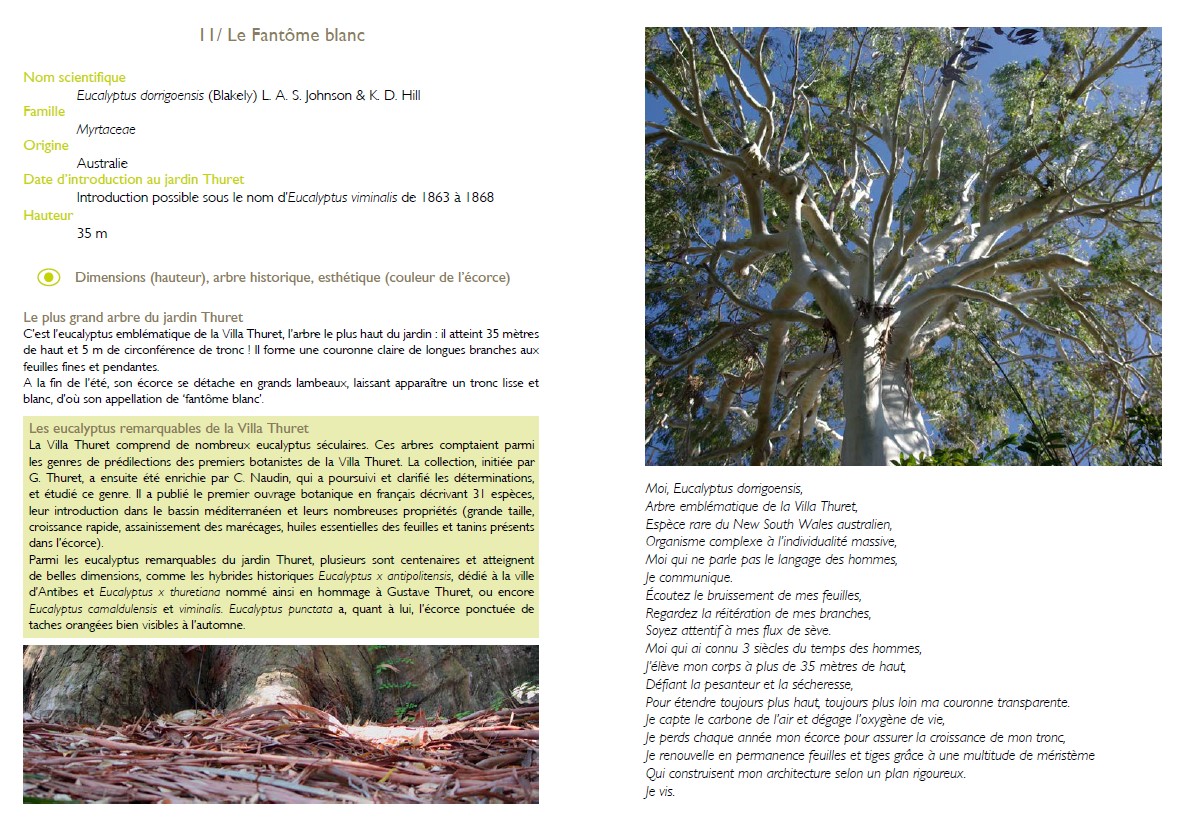
The trail of remarkable trees (“A la découverte du jardin de Thuret”, or “Discovering the Thuret garden”, in French): The White Phantom.
In 1927, the funding and upkeep of the Villa Thuret are transferred to the Ministry of Agriculture and the Centre agronomique de Provence (the Provence agronomic research centre) is founded at the Villa Thuret. Physics and agricultural meteorology stations are relocated there in 1928. Zoology, agronomy, plant physiology and plant pathology stations are added.
In 1946, with the creation of INRA (The French National Institute of Agronomic Research), Villa Thuret becomes a botany and plant pathology research station, formally integrated into INRA in 1964.
A library
When Gustave Thuret moves to Cap d'Antibes to continue his research, he begins to collect the documentation needed for his scientific work.
On his death in 1875, this collection, initially containing three hundred and fifty-six volumes, is bequeathed to his assistant Edouard Bornet, who in turn donates it to the Villa Thuret.

Library at the Villa Thuret, Gilles Arbiol
In 2010, a project is set up to showcase old documents. With the support of INRA's Delegation for Scientific and Technical Information in Versailles, a partnership is set up with the France’s national library, the Bibliothèque Nationale de France to digitise old books and periodicals.
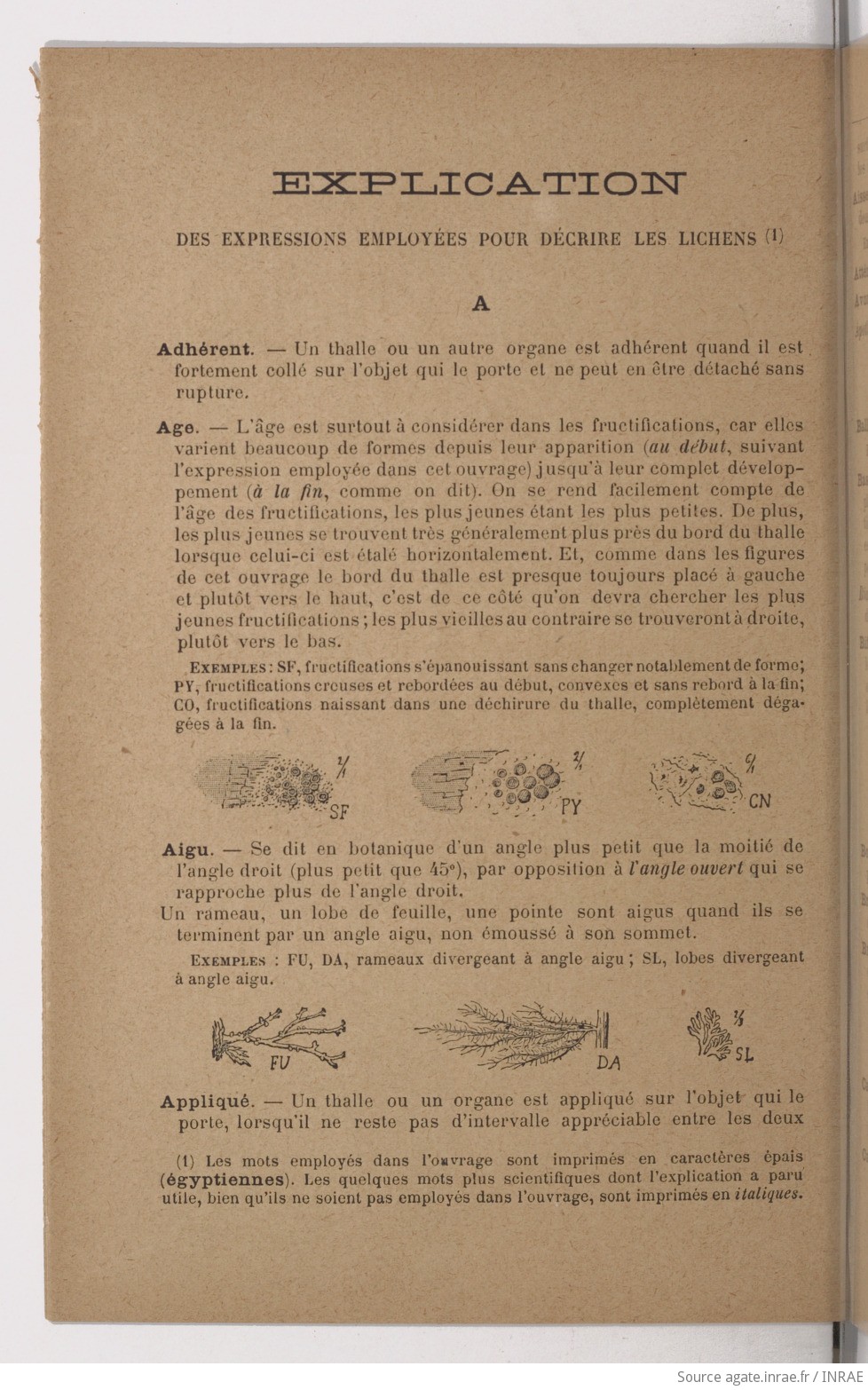
A new flora of lichens for the easy determination of species without microscope or reagents: with 1178 unpublished figures drawn from nature by the author. In French Nouvelle flore des lichens pour la détermination facile des espèces sans microscope ni réactifs : avec 1178 figures inédites dessinées d'après nature par l’auteur. Boistel, Alphonse. 1904. Page 126.
The library occupies the largest room in the Villa Thuret. One hundred and sixty linear metres of shelving house a collection of old documents, mainly specialising in plants: botanical monographs, floras et florulas, plant biology, horticulture, arboriculture, exotic plant species and acclimatation. The works in the collection are evenly distributed between 1850 and the present day.
Around a hundred works date from the first half of the 19th century. The library also includes numerous documents on the study of fungi and algae. In total, there are 3,608 volumes listed, corresponding to 1,311 titles (1,767 old volumes and 1,707 periodicals). The collection also includes correspondence, archives and offprints.
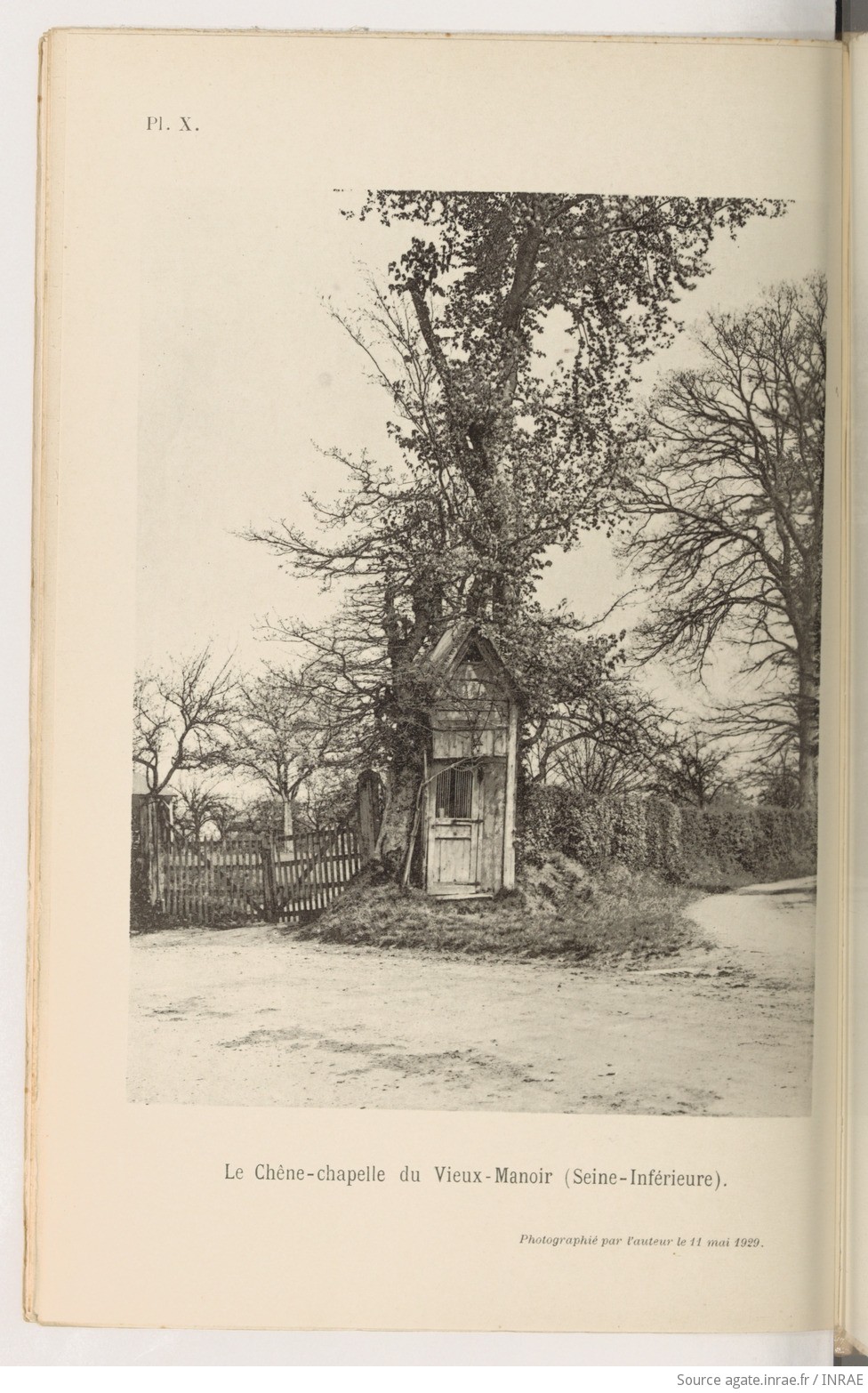
Le chêne-chapelle du Vieux Manoir (Seine-inférieure), Les vieux arbres de la Normandie, fascicule 5, Gadeau, 1929
And today at INRAE
The collections at Villa Thuret continue to be characterised and showcased by the Experimental Unit, both the living collections (introduction of new species each year, public visits to the collections, taxonomic identification) and the non-living collections.
Following the digitisation of part of the documentary collection, part of the historical herbarium was digitised in 2018. The 75,000 parts of this herbarium compiled by Gustave Thuret and his successors can be viewed on the RécolNat platform. The search for “model” specimens that has just begun

Entrance of the Villa Thuret, Gilles Arbiol
The unit's project focuses on the theme of global change, with its three components namely climate change, the erosion of biodiversity and biological invasions. The aim is to be able to carry out experimental and research activities, but also to develop scientific mediation and, more broadly, science with and for society. The historical and current collections are therefore key resources for work and actions on these three aspects of global change.
Bibliography
Bornet, É. (1876). Bibliographical note on Mr Gustave-Adolphe Thuret. in french.
Delorme, S., & Ducatillion, C. (2017). Le Sentier des arbres remarquables. (the trail of remarkable trees, descovering the Villa Thuret) Inra.
Ducatillion, C. (2013, décembre 10). L’art de l’acclimatation : Le patrimoine de la Villa Thuret entre dans Gallica. (The art of acclimatisation: the heritage of the Villa Thuret enters Gallica, in French) Le blog de Gallica. https://gallica.bnf.fr/blog/10122013/lart-de-lacclimatation-le-patrimoine-de-la-villa-thuret-entre-dans-gallica?mode=desktop
Poirault, G. (1931). Livret guide du visiteur au jardin Thuret. (booklet – visitor’s guide to the Villa Thuret, in French).
Authors : Gilles Arbiol (INRAE - UE Villa Thuret), Gildas Gâteblé (INRAE - UE Villa Thuret), Pascale Hénaut (INRAE - DIpSO) and Valérie Henri (INRAE - DipSO)
To cite this text : Focus les collections de la Villa Thuret, Gilles Arbiol, Gildas Gâteblé, Pascale Hénaut, Valérie Henri (INRAE), septembre 2024. https://agate.inrae.fr/agate/fr/content/focus



